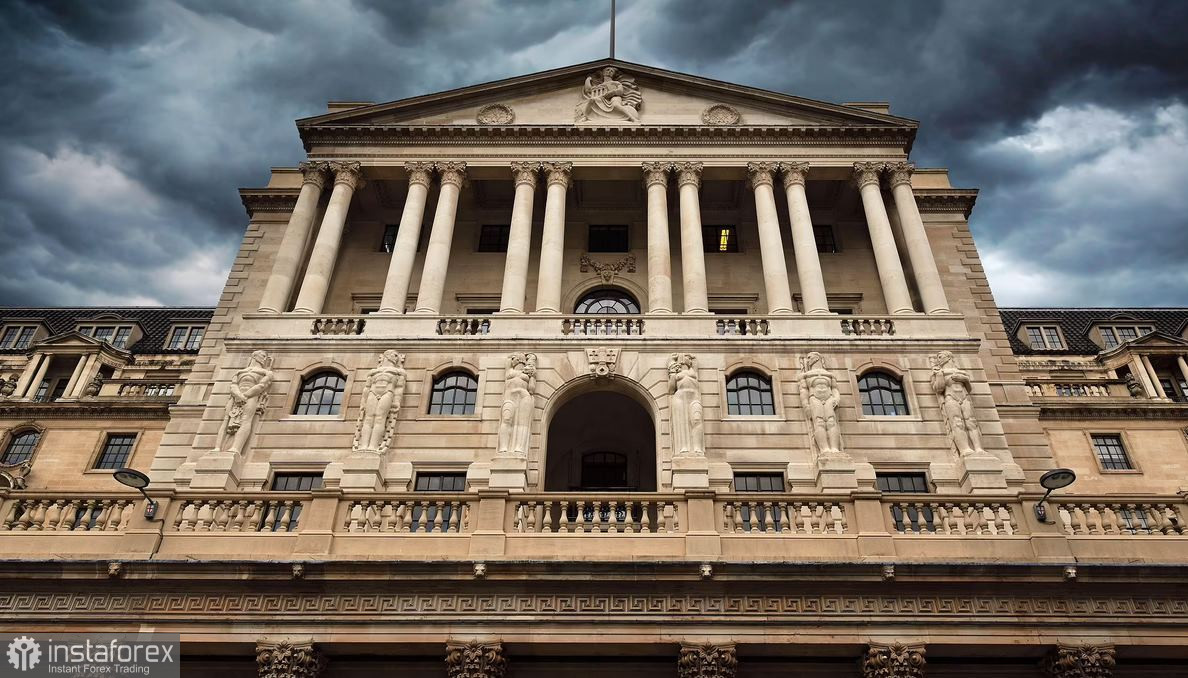The pound-dollar pair tested the 20th figure again today after the announcement of the results of the Bank of England's June meeting. And although the bears were unable to develop a downward momentum, the fact of the weakening of the British currency itself is indicative. After all, the pound plunged in the face of an interest rate hike by 25 basis points. This decision did not impress market participants. Firstly, the 25-point increase was fully taken into account in prices, and secondly, traders were disappointed by the fact that the central bank did not dare to take a more aggressive step. For example, today the Swiss National Bank unexpectedly increased the rate by 50 basis points (for the first time in 15 years), contrary to the skeptical forecasts of most experts. And the Fed surprised by deciding on a 75-point increase. A similar tone was expected from the English central bank. But London remained true to itself, moving along a pre-planned trajectory.
After the first wave of disappointments, the market still turned to face the British currency. In just a few hours, the GBP/USD pair jumped by almost 200 points, being designated within the 22nd figure. Such price dynamics were due, in my opinion, to several reasons.

First of all, the market drew attention to the split in the camp of the Monetary Policy Committee. Three members of the central bank – Michael Sanders, Catherine Mann and Jonathan Haskell voted in favor of raising the rate by 50 basis points. They remained in the minority – six of their other colleagues insisted on a 25-point increase. But the very fact of such a split "in the direction of tightening" strengthened the position of the British currency. Moreover, following the results of the June meeting, BoE Governor Andrew Bailey decided not to hold a press conference, so traders had to be guided by their own conclusions and the main theses of the accompanying statement.
The final communique, by the way, also turned out to be quite good for the British currency. In fact, the central bank has left the door open for future rate increases. While uncertainty about the future prospects has been weighing on the pound over the past few weeks (here we do not even take into account the strengthening of the greenback). Concern about this increased after the release of data on the growth of the British economy: all components of the report came out in the red zone, reflecting a slowdown in key areas. Many experts have suggested that the BoE will not implement an overly aggressive scenario to tighten monetary policy. The option of a pause after two promotions at the next meetings was also discussed.
But judging by the rhetoric of the accompanying statement, the central bank will keep the chosen course. The pace of the rate increase may raise questions (most likely, the central bank will keep the 25-point step), but the probability of any pause at the moment has significantly decreased. Thus, in the final communique, the BoE indicated that the members of the Committee are ready to "act decisively" to extinguish the risks associated with a stable increase in inflationary pressure.
It should be recalled here that the results of the meeting puzzled market participants. Bailey made it clear, not too obscure, that the BoE has two main ways: either to raise the rate further, struggling with inflationary growth (but at the same time pushing the economy into recession), or to accept further growth in the consumer price index, abandoning aggressive measures and hoping for an increase in GDP or at least stagnation. After the disappointing macroeconomic releases (GDP volume, PMI indices), the opinion began to sound more and more often in the market that the central bank would resort to the second option.
However, the results of the meeting showed that the central bank chose the third – combined – scenario. It chose a more gradual approach amid fears of a recession, but at the same time did not abandon the tightening of monetary policy.
At the moment, it is difficult to predict how this strategy will affect the positions of the British currency. Traders initially expressed their disappointment with the 25-point rate hike (the pair dropped to 1.2040), but then were inspired by the fact that the central bank would still increase the rate – "slowly but surely." In addition, GBP/USD bulls took advantage of the actual split in the BoE camp – as mentioned above, three of the nine members of the Committee were in favor of a 50-point hike.
And yet, it is difficult to say in which direction the pendulum will swing, especially in the face of the Fed's decision. The English central bank is clearly slowing down the pace of rate hikes, while the Fed, on the contrary, is increasing. This factor can play a decisive role in the fate of GBP/USD, and, apparently, not in favor of the pound.
At the moment, it is advisable to take a wait-and-see position on the GBP/USD pair. The results of the BoE's June meeting cannot be called hawkish, so the current surge of optimism on the part of bulls may be temporary and fleeting. It is also worth noting that traders could not overcome the resistance level of 1.2300 (Kijun-sen line), whereas this is a prerequisite for the development of an upward movement. In other words, the current situation is too ambiguous to draw any conclusions. In conditions of such uncertainty, there is no need to hurry with trading decisions.





















